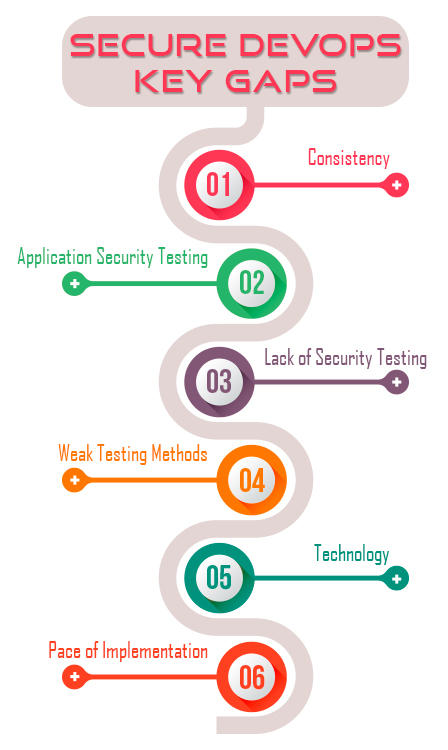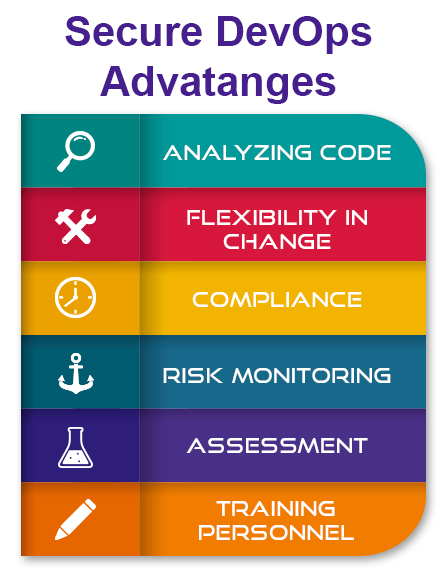
Dealing with security is one aspect that has become key for many organizations in the digital race. Firms managed to drive innovation and fast-paced delivery through technology but failed to achieve full-level security.
Though the advent of technologies like DevOps, Cloud, among others eased typical IT processes, many firms still report lack of security as a major challenge.
DevOps is one of the most-hot technology trends that addressed the security concerns of organizations in the form of ‘DevSecOps’, while also enhancing their productivity.
Though ‘DevSecOps’ or ‘Secure DevOps’ or ‘SecDevOps’ proved successful in terms of security integration across the process chain, firms reported some bottlenecks in implementing DevSecOps practices to the fullest.
SecDevOps or ‘Secure DevOps’
At the time many firms raised security concerns in DevOps implementation, SecDevOps appeared as a boon to many of them who termed it effective for its robustness in facilitating faster development cycles security assurance.
Eventually, most of them could see a decline in the rate of their code vulnerabilities by more than 40 percent with SecDevOps integration.
However, things didn’t remain the same for all! Some firms have also reported hindrance in implementing ‘Secure DevOps’.
Key gaps they reported as part of ‘Secure DevOps’ implementation, as reported by surveys, include:

- Consistency: Consistent practice of SecDevOps culture remained a challenge
- Application Security Testing: Only 50 percent of firms reported integration of application security testing elements in their Continuous Integration and Continuous Delivery (CI/CD) workflows
- Lack of Security Testing: Lack of security testing mechanism and the automated security testing tools that ensure smooth CI/CD pipeline
- Weak Testing Methods: Respondents reported false positive results out of their testing solutions
- Technology: Smart technologies that fit in the existing CI/CD workflows was a missing case for many firms
- Pace of Implementation: Focus on fast-paced delivery with security & testing at a later stage also compromised security in some cases. That doesn’t mean to bring down the pace! Experts suggest a well-designed CI/CD pipeline can manage both parallelly.
Lack of the presence of the aspects have reportedly posed challenges to firms in implementing ‘Secure DevOps’.
So, what is the right ‘Secure DevOps’ approach?
Most common challenge reported in failing to implement the ‘Secure DevOps’ approach is ‘considering security and testing as an afterthought with only delivery speed in focus’.
Most of the traditional CI/CD pipelines had security operations separated from the software delivery chain.
Lacking due attention to security integration across the process chain might result in missing of key vulnerabilities during development and testing phases, which can reflect in the final production stage.
So, fast-paced software delivery with security in place all through the process makes the successful DevOps.
This can be achieved by:
- Automating Security: Integrating manual security tools to the CI/CD pipeline might slow down the process. A solution to that is using automation to automate security processes using relevant tools
- Integration: Integrating security across the pipeline means implementing security at all stages rather than at the end or at few points.
- Continuous Feedback: Implementing security for a single process is not a complete solution to security concern. Continuous feedback about implemented security feature and its compatibility or updates for future applications makes the right approach.
- Multiple Security Processes: A single security solution might not be sufficient to meet the ever-changing security threats, which need all the possible security solutions to tackle any possible risk
Overall, a right ‘Secure DevOps’ approach is nothing but improving security by applying DevOps practices across security workflows.
Implementing ‘Secure DevOps’ & Advantages:
Six steps best describe the successful implementation of security in DevOps methodology i.e. ‘Secure DevOps’. These include:
- Analyzing Code: Break down the code delivery process into small and frequent re
 leases, which makes it easy to check back for any vulnerabilities
leases, which makes it easy to check back for any vulnerabilities - Flexibility in Change: Let the developer take freedom in recommending the right security integration as and when required, and make the needed changes
- Compliance: Coding with right knowledge of compliance brings in a continuous state of compliance across the process chain
- Risk Monitoring: Monitor and deal it out with the vulnerabilities that arise out of your newly-delivered code. This facilitates early resolving of risks for further applications
- Assessment: It is important to keep the assessment process on in the form of code revisits, periodic scans and penetration tests, even after code delivery and relevant vulnerability checks
- Training Personnel: Empowering the staff with right knowledge is key to success of any organization. Enhance your engineers’ skill set by offering them security-based coding knowledge or encouraging them for relevant certifications
What are you waiting for? Security can no more be a concern for you in your DevOps path!
 leases, which makes it easy to check back for any vulnerabilities
leases, which makes it easy to check back for any vulnerabilities